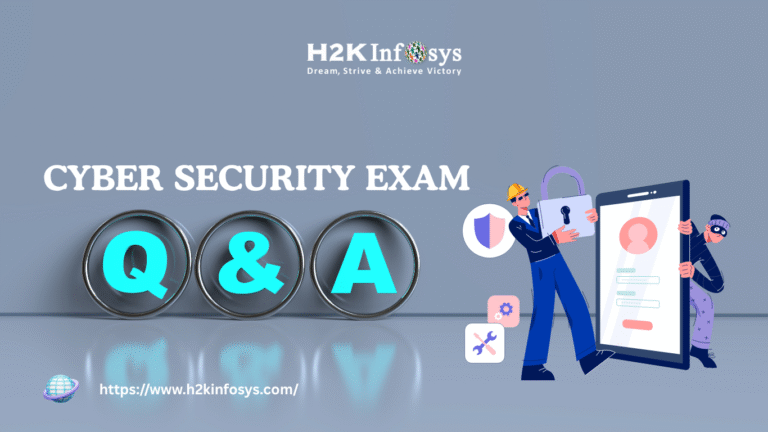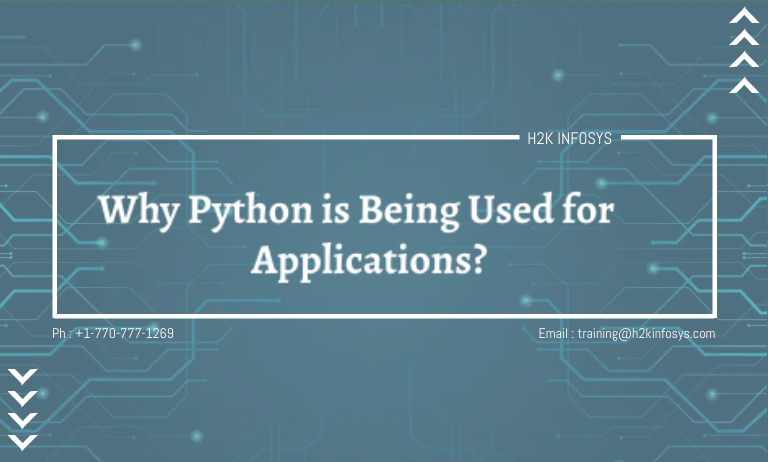Introduction
Cyber Security is a fast-growing field, and many learners now choose Cyber security training and placement programs to build strong, job-ready skills. With flexible online classes for cyber security, Cyber security analyst training online, and online courses for cybersecurity, anyone can start learning from anywhere. Whether you’re preparing for exams or looking for a Cyber security course with placement, these Cyber security exam questions will help you strengthen your fundamentals and boost your career journey.
These PDFs explain essential cybersecurity concepts, including the difference between threats and vulnerabilities, common attack techniques like cross-site scripting (XSS), botnets, and various cyber defense mechanisms. They are especially useful for interview preparation, certification studies, and strengthening overall security knowledge.
Cybersecurity questions and answers PDFs are widely used for self-learning and interview preparation, covering both theoretical knowledge and practical security scenarios. These resources typically include topics such as firewalls, encryption, malware types, network security components like VPNs and IDS/IPS, ethical hacking roles, social engineering techniques, and major cyber threats such as DDoS attacks, phishing, and cross-site scripting (XSS).
Sample Questions and Answers
Who are White Hat Hackers?
White Hat Hackers are authorized security professionals who identify and remediate vulnerabilities before attackers can exploit them.
What is a Firewall?
A firewall is a security system that monitors and controls network traffic based on predefined rules to protect systems from unauthorized access.
What is the CIA Triad?
The CIA Triad represents three core security principles: Confidentiality, Integrity, and Availability.
What is SQL Injection?
SQL Injection is an attack technique that manipulates application inputs to execute malicious database queries.
Virus vs. Worm
A virus requires a host file to spread, while a worm can self-replicate and propagate across networks without user action.
Common Topics Covered in Cyber Security PDFs
Fundamentals:
What is a firewall, VPN, DDoS attack, botnet, honeypot, or XSS? Understanding the difference between threat, vulnerability, and risk.
Cryptography:
Symmetric versus asymmetric encryption, hashing techniques, and data protection basics.
Network Security:
Port scanning, traceroute, DNS attacks, and a comparison of IDS and IPS.
Cyber Attacks:
Man-in-the-Middle attacks, phishing, shoulder surfing, and other social engineering techniques.
Security Testing:
Vulnerability Assessment versus Penetration Testing, and black-box versus white-box testing approaches.
Core Security Concepts:
CIA Triad (Confidentiality, Integrity, Availability), system hardening, and data leakage prevention.
Where to Find These PDFs
Interview Preparation Platforms:
Websites like InterviewBit and Great Learning offer curated lists of cyber security interview questions in downloadable formats.
Document Sharing Websites:
Scribd provides access to numerous free PDFs, including titles such as Cyber Security Basic Interview Questions.
Key Concepts Explained in These Resources
Cryptography:
Techniques used to secure data through encryption and decryption.
Threats:
Potential risks such as malware, cybercriminals, or unauthorized access.
Vulnerabilities:
System weaknesses like outdated software or misconfigurations.
Risks:
The likelihood of a threat exploiting an existing vulnerability.
Malware & Attacks:
Types of malware, phishing, and social engineering
Network Security:
Firewalls, DNS, IDS vs IPS, and network-level encryption
Access Control:
Authentication, authorization, data encryption, and availability
Ethics & Law:
Ethical hacking, cybercrime, and penetration testing
Why Cybersecurity Certification?
Cybersecurity certifications validate your expertise and prove your readiness to tackle real-world security challenges. They are highly valued by employers and often required for top roles in the industry. Popular certifications like CISSP, CEH, and CompTIA Security+ are globally recognized and can significantly elevate your career growth. Preparing using structured Cyber security exam questions helps you build clarity, speed, and confidence.
Benefits of Cyber Security Exam Questions and Answers
Comprehensive Learning: Exam Q&A sets cover everything from foundational principles to advanced security practices. Using Cyber security exam questions allows learners to understand real exam patterns and question difficulty.
Practice and Self-Assessment: Working through multiple questions enables you to test your understanding, track your progress, and identify areas that need more focus. Consistent practice with Cyber security exam questions improves exam readiness.
Flexible and Convenient: Downloadable PDFs make it easy to study anytime, on any device, ensuring uninterrupted learning even on the go. Many learners rely on Cyber security exam questions because they simplify revision.
Up-to-Date Information: Quality resources are regularly updated to match current industry standards and exam formats, keeping your preparation relevant and effective. Updated Cyber security exam questions help you stay aligned with certification needs.

Cyber Security Basics
1. What is Cyber Security?
A. Cyber Security protects systems, networks, and data from digital attacks. Many Cyber security exam questions begin with fundamentals like these to test conceptual clarity. It ensures the confidentiality, integrity, and availability of information.
2. What is a cyber attack?
A. A cyber attack is an attempt to damage, steal, or disrupt digital systems.
Attackers exploit vulnerabilities to gain unauthorized access.
These attacks can be automated or manually executed.
3. What is the CIA Triad?
A. CIA Triad stands for Confidentiality, Integrity, and Availability.
It forms the foundation of all security policies and controls.
Its purpose is to ensure data is protected at all levels.
4. What is malware?
A. Malware is malicious software designed to harm or exploit systems.
Examples include viruses, worms, trojans, and ransomware.
It spreads through downloads, attachments, or exploitable vulnerabilities.
5. What is a virus?
A. A virus attaches itself to clean programs and spreads when executed.
It modifies files, corrupts data, or damages systems.
It requires user action to activate and propagate.
6. What is a worm?
A. A worm self-replicates and spreads across networks automatically.
It does not require user interaction to infect systems.
Worms often cause heavy network congestion and disruption.
7. What is a trojan?
A. A Trojan disguises itself as legitimate software to trick users.
Once installed, it opens a backdoor for attackers.
Its main aim is spying, stealing data, or system control.
8. What is ransomware?
A. Ransomware encrypts files and demands payment for decryption.
It spreads through phishing emails or malicious downloads.
Victims lose access to critical data until ransom is paid.
9. What is phishing?
A. Phishing tricks users into revealing sensitive information. Many Cyber security exam questions include phishing because it is one of the most common attack vectors. Its goal is to steal passwords, credit card numbers, or identities.
10. What is spear phishing?
A. Spear phishing targets specific individuals or organizations.
The messages are personalized and harder to detect.
Attackers research victims to increase success.
11. What is social engineering?
A. Social engineering manipulates humans instead of hacking systems.
Attackers use psychological tricks to steal information.
It includes phishing, tailgating, pretexting, and baiting.
12. What is encryption?
A. Encryption converts plain data into unreadable ciphertext. Many Cyber security exam questions include encryption basics because it’s essential for data protection. Only authorized users with decryption keys can access it.
13. What is a firewall?
A. A firewall filters incoming and outgoing network traffic.
It blocks unauthorized connections based on predefined rules.
It serves as a barrier between trusted and untrusted networks.
14. What is two-factor authentication (2FA)?
A. 2FA requires two separate verification steps to log in. It frequently appears in Cyber security exam questions since authentication is a foundation of security. It significantly increases account security.
15. What is brute force attack?
A. A brute force attack tries every possible password combination.
It aims to crack passwords without prior knowledge.
Attackers use automated tools to speed up attempts.
16. What is a botnet?
A. A botnet is a network of infected devices controlled by hackers.
These devices execute large-scale attacks like DDoS.
They operate silently without the owner’s knowledge.
17. What is DDoS?
A. Distributed Denial of Service floods servers with traffic. It is commonly included in Cyber security exam questions due to its high real-world impact. It overwhelms systems until they can’t respond to legitimate users.
18. What is SQL Injection?
A. SQL Injection inserts malicious SQL commands into input fields. You will often find this topic in Cyber security exam questions as it remains a common web vulnerability. Attackers can read, modify, or delete sensitive data.
19. What is XSS (Cross-Site Scripting)?
A. XSS injects malicious scripts into trusted websites.
These scripts execute in the user’s browser.
It steals cookies, sessions, or user data.
20. What is a zero-day vulnerability?
A. A zero-day is an unknown flaw with no available patch. You will find these frequently in Cyber security exam questions because they are highly dangerous. Attackers exploit it before developers can fix it.
Networks & Systems Security
21. What is a VPN?
A. A VPN encrypts your internet connection for secure access.
It hides your IP address from attackers and trackers.
It protects data on public or untrusted networks.
22. What is IDS?
A. An Intrusion Detection System monitors networks for suspicious activity.
It sends alerts when possible threats are detected.
It does not block attacks—only identifies them.
23. What is IPS?
A. Intrusion Prevention System detects and blocks attacks in real-time.
It sits inline with network traffic.
It actively prevents malicious actions.
24. What is port scanning?
A. Port scanning checks open ports on a system.
Attackers use it to find entry points into networks.
It helps security teams detect weak services.
25. What is network sniffing?
A. Sniffing captures and analyzes network traffic. Tools like Wireshark appear often in Cyber security exam questions because they are widely used in real investigations. Attackers use it to steal credentials or sensitive data.
26. What is SSL?
A. SSL is a protocol securing communication between browser and server.
It encrypts data to prevent interception.
Modern systems use its successor TLS.
27. What is TLS?
A. TLS is an upgraded version of SSL providing strong encryption. Many Cyber security exam questions highlight TLS versions and configurations due to its importance in secure communication. It secures websites, emails, and apps.
28. What is session hijacking?
A. Attackers steal a user’s active session token.
They impersonate the user on the system.
This leads to unauthorized access.
29. What is a MAC address?
A. A MAC address uniquely identifies network hardware.
It is assigned to network interface cards (NIC).
It operates at the data link layer.
30. What is a honeypot?
A. A honeypot is a fake system set up to lure attackers.
It helps analyze hacking behavior.
It protects real systems by acting as a decoy.
31. What is DNS spoofing?
A. DNS spoofing modifies DNS records to redirect users.
Attackers send victims to fake websites.
It leads to credential theft or malware downloads.
32. What is ARP poisoning?
A. ARP poisoning sends fake ARP messages to a network.
It links the attacker’s MAC address to a victim’s IP.
This enables MITM attacks.
33. What is packet filtering?
A. Packet filtering blocks or allows packets based on rules. It’s commonly covered in Cyber security exam questions because it forms the basis of firewall operations. It prevents unauthorized access.
34. What is OAuth?
A. OAuth enables third-party apps to access user data without passwords.
It works using secure tokens.
It is commonly used in social logins.
35. What is penetration testing?
A. Pen testing simulates real cyberattacks to identify vulnerabilities. Many Cyber security exam questions cover pen-testing tools, techniques, and methodologies. Ethical hackers perform these assessments.
36. What is hashing?
A. Hashing converts data into a fixed-length value.
It’s a one-way process and cannot be reversed.
Used for password security and data integrity.
37. Examples of hashing algorithms?
A. Common examples are MD5, SHA-1, and SHA-256.
They generate unique hashes for given inputs.
Used widely in authentication systems.
38. What is a digital signature?
A. A digital signature verifies data authenticity and integrity.
It uses asymmetric encryption.
It proves the sender’s identity.
39. What is data masking?
A. Data masking hides sensitive information in datasets.
It replaces real data with fictional values.
Useful during testing or training environments.
40. What is sandboxing?
A. Sandboxing isolates programs in a controlled environment.
It prevents malware from affecting the main system.
Useful for testing suspicious files safely.
Advanced Concepts
41. What is cyber threat intelligence?
A. It collects and analyzes data about potential threats.
Helps predict attacker behavior and prevent damage.
Used by SOC teams and analysts.
42. What is ethical hacking?
A. Ethical hacking tests systems with permission. It is a key topic in Cyber security exam questions because most certification exams include ethical hacking concepts. Its goal is to find vulnerabilities before attackers do.
43. What is black hat hacking?
A. Black hats illegally break into systems for profit.
They exploit vulnerabilities without permission.
Their intent is harmful.
44. What is white hat hacking?
A. White hats are ethical hackers working legally.
They help secure systems and networks.
They follow proper authorization rules.
45. What is gray hat hacking?
A. Gray hats fall between black and white hats.
They may break rules but without harmful intent.
They often reveal vulnerabilities to the public.
46. What is digital forensics?
A. Digital forensics investigates cyber crimes.
It collects and analyzes digital evidence.
Used in legal and corporate investigations.
47. What is MFA?
A. Multi-factor authentication requires two or more verification steps.
It reduces login-related cyber risks.
Often uses biometrics, OTP, or hardware tokens.
48. What is access control?
A. Access control restricts who can use system resources. This is a recurring topic in Cyber security exam questions because controlling permissions reduces security risks. It ensures users get only necessary permissions.
49. Types of access control?
A. DAC, MAC, and RBAC are the main types.
They differ in permission assignment.
Used based on organization needs.
50. What is SIEM?
A. SIEM collects and analyzes security logs in real-time. Log analysis and SIEM tools are commonly covered in Cyber security exam questions for SOC-related training. Used widely in SOC operations.
51. What is PKI?
A. Public Key Infrastructure manages digital certificates.
It enables secure communication via encryption.
Used in HTTPS, emails, and VPNs.
52. What is a security audit?
A. A security audit reviews an organization’s security posture.
It checks compliance with standards and policies.
Helps identify system weaknesses.
53. What is patch management?
A. Patch management updates software to fix vulnerabilities.
It prevents attackers from exploiting known flaws.
Essential for system maintenance.
54. What is a rootkit?
A. A rootkit hides malicious activities on a device.
It gives attackers persistent control.
Often difficult to detect.
55. What is an exploit?
A. An exploit takes advantage of a vulnerability.
Attackers use it to breach systems.
Can be software, code, or a set of commands.
56. What is spyware?
A. Spyware secretly monitors user activity.
It steals data like passwords and browsing history.
Often installed without consent.
57. What is keylogging?
A. Keylogging records keystrokes typed by a user.
Hackers use it to steal login credentials.
Can be hardware or software based.
58. What is whaling?
A. A. Whaling targets high-profile executives.
It uses tailored phishing messages.
Attackers aim for financial or confidential data.
59. What is MITM attack?
A. Man-in-the-middle intercepts communication between two parties.
Attackers steal or manipulate data secretly.
Occurs in unsecured networks.
60. What is blockchain security?
A. Blockchain uses cryptography to secure data blocks.
Each block links to the previous one, preventing tampering.
Provides transparency and immutability.
Risk & Governance
61. What is risk assessment?
A. Risk assessment identifies and analyzes potential threats.
It helps prioritize risks based on impact.
Used to plan mitigation strategies.
62. What is vulnerability assessment?
A. It scans systems for weaknesses and flaws.
Helps organizations know where they are exposed.
Usually done with automated tools.
63. What is threat modelling?
A. Threat modelling predicts how attackers might exploit systems. Many Cyber security exam questions include threat modelling frameworks like STRIDE and DREAD. It identifies assets, vulnerabilities, and risks.
64. What is GDPR?
A. GDPR protects the personal data of EU citizens.
Organizations must follow strict privacy rules.
Violations lead to heavy penalties.
65. What is HIPAA?
A. HIPAA secures health-related data in the US.
It protects patient confidentiality and access.
Applicable to healthcare providers and insurers.
66. What is ISO 27001?
A. It is a global standard for information security management.
It outlines required controls and best practices.
Organizations use it to build strong security frameworks.
67. What is incident response?
A. Incident response manages cyber attacks systematically.
It includes detection, containment, and recovery.
Reduces damage and downtime.
68. What is BCP?
A. Business Continuity Plan ensures operations continue during disruptions.
It includes backup strategies and emergency processes.
Prepares organizations for disasters.
69. What is disaster recovery?
A. Disaster recovery focuses on restoring IT systems after failures.
It involves backups and system rebuilding.
Critical for business survival.
70. What is a security policy?
A. A security policy defines rules and procedures for protection. Developing and analyzing policies is a frequent part of Cyber security exam questions for governance roles. It guides employees on acceptable behaviors.
71. What is authentication?
A. Authentication verifies a user’s identity.
It uses passwords, biometrics, or tokens.
First step in secure access.
72. What is authorization?
A. Authorization decides what resources a user can access.
It follows successful authentication.
Controls permissions and privileges.
73. What is privilege escalation?
A. Attackers gain higher access than allowed.
They exploit vulnerabilities or misconfigurations.
It leads to full system compromise.
74. What is insider threat?
A. Threats caused by internal users or employees.
They may act accidentally or maliciously.
Harder to detect than external attacks.
75. What is principle of least privilege?
A. Users get minimum permissions required for tasks.
This limits damage if accounts are compromised.
Improves overall security.
76. What is a security breach?
A. A breach is unauthorized access to systems or data. Many Cyber security exam questions include breach identification and response steps because it reflects real-world incidents. Often caused by weak defenses.
77. What is compliance?
A. Compliance means following laws and security standards.
Ensures organizations meet regulatory requirements.
Helps avoid legal penalties.
78. What is SOX?
A. Sarbanes-Oxley Act ensures accuracy in financial reporting.
It mandates strict internal controls.
Applies to public companies in the US.
79. What is PCI DSS?
A. Security standard for companies handling card payments.
Protects credit card information from theft.
Required for all merchants using card transactions.
80. What is DLP?
A. Data Loss Prevention prevents unauthorized data movement.
It monitors, blocks, and controls outgoing information.
Used to protect sensitive data.
Tools & Real-World Concepts
81. Metasploit is used for what?
A. Metasploit is a penetration testing framework. Tool-based Cyber security exam questions often include Metasploit due to its widespread use. Widely used by ethical hackers.
82. What is Nmap?
A. Nmap scans networks to find open ports and services.
It helps discover vulnerabilities and active devices.
Useful in both security auditing and troubleshooting.
83. What is Wireshark?
A. Wireshark captures and analyzes network packets.
It helps diagnose network issues.
Attackers also use it for sniffing.
84. What is Burp Suite?
A. Burp Suite tests web application security.
It includes tools for scanning and intercepting traffic.
Commonly used in bug bounty and pen tests.
85. What is Kali Linux?
A. Kali Linux is a penetration testing operating system.
It includes hundreds of security tools.
Popular among cybersecurity professionals.
86. What is OWASP?
A. OWASP promotes secure web application development.
It provides resources like OWASP Top 10.
Used globally for web security standards.
87. What is OWASP Top 10?
A. List of top 10 critical web application vulnerabilities.
Includes injection, broken authentication, and XSS.
Guides developers to prioritize security.
88. What is cloud security?
A. Cloud security protects cloud-based systems and data. Certifications increasingly include cloud-related Cyber security exam questions due to rising cloud adoption. Includes identity, network, and application protections.
89. What is IAM?
A. Identity and Access Management controls user access in cloud.
Ensures users access only what they need.
Key to preventing unauthorized entry.
90. What is container security?
A. Protects containerized applications like Docker.
Involves securing images, runtimes, and registries.
Prevents isolation breaches.
91. What is endpoint security?
A. Secures devices like laptops, phones, and desktops.
Uses antivirus, EDR, and firewalls.
Protects the most vulnerable access points.
92. What is behavioral analytics?
A. Analyzes user activity to detect anomalies.
Useful for spotting insider threats or compromised accounts.
Often part of advanced SOC tools.
93. What is cyber kill chain?
A. A model outlining stages of a cyber attack.
Includes reconnaissance, exploitation, and exfiltration.
Helps identify and stop attacks early.
94. What is threat hunting?
A. Proactive search for hidden threats in networks. Many advanced-level Cyber security exam questions evaluate knowledge of threat hunting indicators and techniques. Analysts look for unusual patterns.
95. What is Red Teaming?
A. Red teams mimic real attackers to test defenses.
They find weaknesses security tools may miss.
Real-world simulation strengthens security posture.
96. What is Blue Teaming?
A. Blue teams defend against attacks using monitoring and controls.
They detect, analyze, and stop threats.
Work closely with SOC operations.
97. What is Purple Teaming?
A. Purple Team combines Red and Blue teams.
They collaborate to improve attack detection and defense.
Helps organizations learn faster.
98. What is API security?
A. API security protects interfaces used by apps and users. Modern Cyber security exam questions include API vulnerabilities due to increasing API usage. Prevents unauthorized access and data leaks.
99. What is mobile security?
A. Mobile security protects devices from threats and vulnerabilities. Cyber security exam questions often focus on mobile risks due to increasing mobile usage. Includes app security, encryption, and device policies.
100. What is continuous monitoring?
A. Continuous monitoring tracks security events in real-time. Many Cyber security exam questions emphasize monitoring because it is central to SOC operations. Essential for automated defenses.
Conclusion
Preparing for a career in cybersecurity becomes much easier when you learn with the right resources. These carefully structured Cyber security exam questions help you strengthen your fundamentals, understand real-world attack scenarios, and build the confidence needed to clear top certifications. Whether you’re aiming for entry-level roles or advanced positions, practicing with Cyber security exam questions ensures you stay industry-ready and well-prepared for any challenge in today’s evolving digital landscape.



























5 Responses
I leaned a lot in a short Period of time. Thank you!
A wonderful expository.
Thank you!
I learnt a lot to revise my exam
I want to answer some questions w you are going to ask me to test my intelligence
Questions and answers